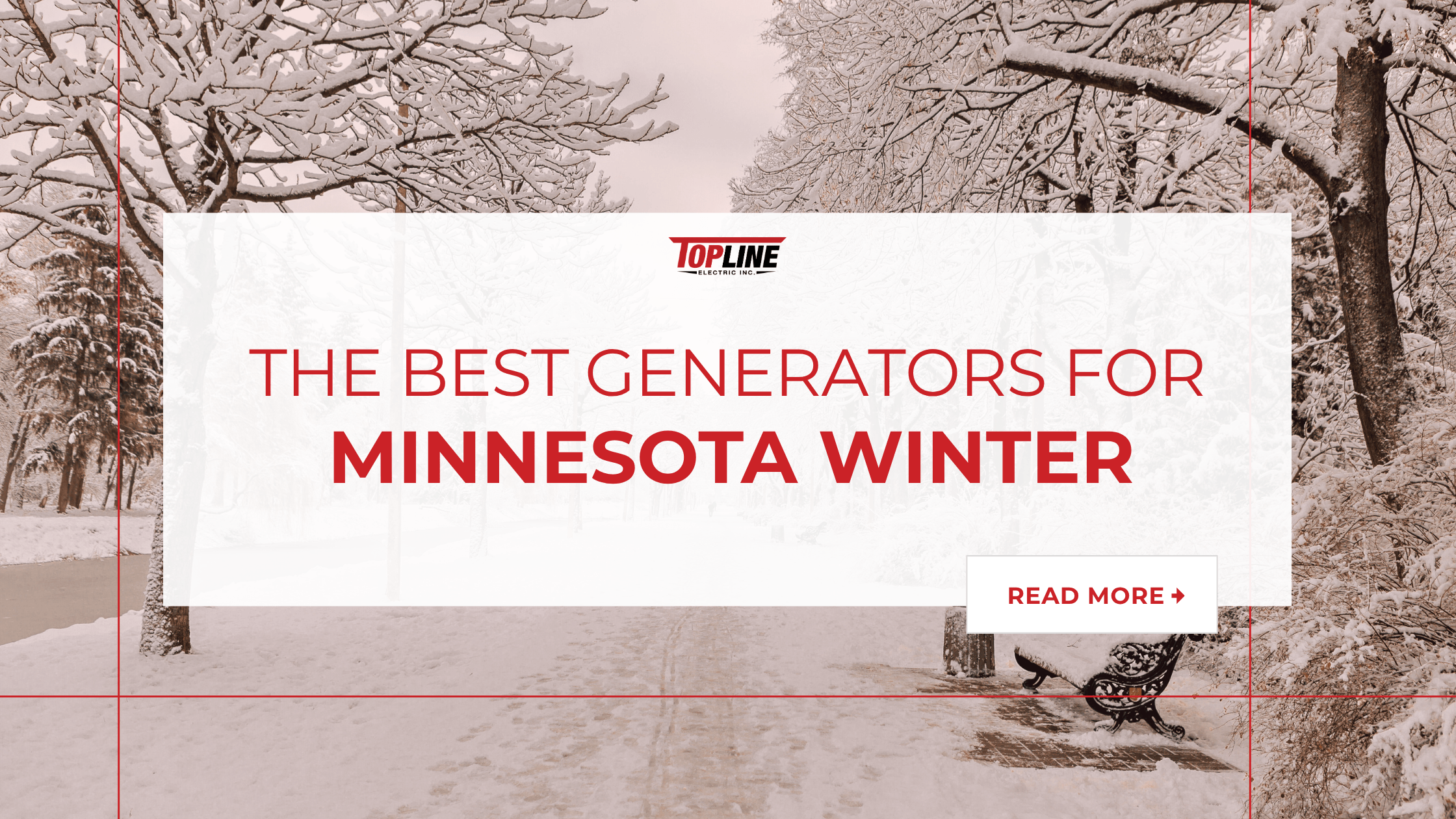Best Generators for Minnesota Winters: Stay Warm and Powered All Season

When winter hits Minnesota, it doesn’t take much (an ice storm, high winds, or heavy snow) to knock out power. And when your home’s heat, water, or sump pump rely on electricity, a backup generator quickly moves from a luxury to a necessity.
In our last post, we covered the main types of generators: portable and standby. Now, let’s dig deeper into which options perform best when temperatures plunge and reliability really matters.
Why Minnesota Winters Demand a Different Standard
Generators face unique challenges here in the Upper Midwest. It’s not just about providing electricity, it’s about starting, running, and refueling reliably when it’s below zero.
Here are the top factors that make a difference in cold weather performance:
- Cold-Start Capability: Look for models designed with block heaters or battery warmers so the engine can start in freezing temps.
- Fuel Reliability: Natural gas and propane are more dependable in cold weather than gasoline, which can thicken or degrade.
- Automatic Operation: When it’s –10°F with a foot of snow, you don’t want to go outside to start or refuel your generator.
- Proper Ventilation: Snow and ice can block vents or air intakes. Installation and placement matter.
- Load Capacity: Heating systems, sump pumps, and refrigerators draw more power in cold months, your generator needs to keep up.
1. Standby Generators: The Gold Standard for Minnesota Homes
For most homeowners, a standby generator is the most reliable and convenient choice during long Minnesota winters.
Why it’s ideal for cold climates:
- Automatic startup: Detects outages and powers up within seconds.
- Runs on natural gas or propane: No need to store or refill fuel in freezing temps.
- Cold-weather kits available: Includes block heaters and battery warmers to ensure dependable starts.
- Whole-home coverage: Keeps heat, sump pump, refrigerator, and lights all running.
Popular cold-weather-rated models include:
- Generac Guardian Series (18–24kW) – Common choice for Minnesota homes; available with cold-weather kit.
- Cummins Quiet Connect™ 20kW – Runs quietly and efficiently, even in freezing temps.
- Briggs & Stratton Fortress Series – Durable, with automatic weekly test runs for readiness.
Pro Tip: If your home uses propane, size your tank appropriately for both heating and generator needs, especially for multi-day outages.
2. Portable Generators: A Budget-Friendly Backup
Portable generators can work well if you only need to power essentials... but they require a bit more effort.
Why they can still work for Minnesota winters:
- Cold-rated models: Some brands (like Honda and Champion) make portable units with cold-weather kits and electric start.
- Flexibility: Can be used for power tools, camping, or tailgating when not needed for emergencies.
- Lower upfront cost: No permanent installation required.
Things to keep in mind:
- Must be stored indoors (garage or shed) and moved outdoors for use.
- Requires manual fueling, which can be tough in snowstorms.
- Always use with a transfer switch to safely power home circuits.
For homes that lose power infrequently or just want to run a furnace and refrigerator, a quality portable generator (like a Honda EU7000is or Champion 9000-watt dual fuel) can be a great entry point.
3. Installation and Maintenance Tips for Winter Reliability
Even the best generator won’t help much if it’s not installed or maintained correctly for Minnesota’s conditions. Here’s what we recommend:
- Install on a raised, level pad to prevent snow buildup and ice damage.
- Add a cold-weather kit for standby units: includes block heaters, battery warmers, and oil heaters.
- Clear snow and ice from vents and air intakes after every major storm.
- Run the generator regularly (most standby units self-test weekly).
- Schedule annual maintenance before the cold season begins.
A licensed electrician can make sure your system is wired safely, sized correctly, and ready for winter’s worst.
Final Recommendation from Top Line Electric
If you live in Minnesota and want true peace of mind during winter outages, a standby generator powered by natural gas or propane is your best investment.
Portable generators can bridge the gap for smaller budgets or occasional use, but for families who rely on electric heating systems or live in rural areas, a permanent standby system is worth every penny.
Our team at Top Line Electric can help you:
- Determine the right generator size for your home
- Choose between natural gas and propane options
- Install cold-weather accessories for reliable operation
- Set up safe, code-compliant wiring and transfer systems
Discover more helpful resources from our team.
Keep learning with expert tips, insights, and real-world advice to help you move forward with confidence.
Need a hand with your electrical project?
We’re here to help! Request a visit or give us a call, and our friendly team will help answer your questions and guide you through the process of getting started. We look forward to hearing from you!


